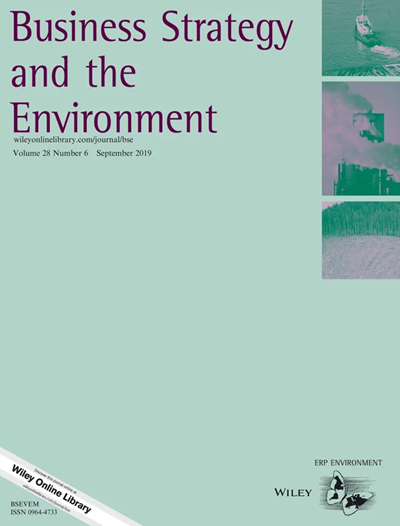循环经济下物流服务商的商业模式:系统文献综述与Panarchy理论框架
IF 13.3
1区 管理学
Q1 BUSINESS
引用次数: 0
摘要
物流服务提供商(lsp)可以通过其对供应链(SC)参与者之间资源流动的可见性和便利性来支持向循环经济(CE)的过渡。然而,电子产品相关术语的激增,加上以制造商为中心的对电子产品的关注,最终导致知识孤岛,导致概念清晰度的整体降低,构成了一个挑战。进一步的挑战是缺乏统一的理论视角,这目前阻碍了lsp可利用的循环商业模式(CBMs)机会的整合。因此,需要采取紧急干预措施来克服这两个关键挑战。因此,本文系统地回顾了现有的学术文献(N = 112),提供了描述性和专题分析,综合了CBMs及其应用、益处和lsp的潜在能力要求。它还阐明了理论理解,通过新的应用嵌套的方法来检查lsp在CE中的作用。具体地说,采用层级制理论视角能够重新解释从系统回顾中获得的见解。这产生了一个新的框架,该框架包含三个嵌套系统,包括LSP, SC和更广泛的物流网络,从而提出了有关使LSP能够成功采用和实施信任措施的条件的建议。概述了更广泛的实际意义和未来研究的方向。本文章由计算机程序翻译,如有差异,请以英文原文为准。
Logistics Service Providers' Business Models in the Circular Economy: A Systematic Literature Review and Panarchy Theory Framework
Logistics service providers (LSPs) can support the transition to a circular economy (CE ) through their visibility over and facilitation of resource flows between supply chain (SC) actors. However, the proliferation of CE ‐related terms, compounded by a manufacturer‐centric focus on CE culminating in knowledge siloes that result in an overall reduction in conceptual clarity, constitutes a challenge. A further challenge is a lack of a unifying theoretical perspective, which currently impedes the consolidation of circular business models (CBMs) opportunities available to LSPs. Urgent interventions toward overcoming these two key challenges are therefore required. Accordingly, this paper systematically reviews existing academic literature (N = 112), offering both descriptive and thematic analyses that synthesise CBMs and their applications, benefits and underlying capability requirements for LSPs. It also elucidates theoretical understanding through the novel application of a nested approach for examining the role of LSPs within the CE . Specifically, the adoption of the panarchy theory lens enabled the reinterpretation of insights garnered from the systematic review conducted. This yielded a new framework that incorporates three nested systems comprising the LSP, the SC and the broader logistics network, leading to propositions regarding the conditions that will enable LSPs to successfully adopt and implement CBMs. Wider practical implications and directions for future research are outlined.
求助全文
通过发布文献求助,成功后即可免费获取论文全文。
去求助
来源期刊

Business Strategy and The Environment
Multiple-
CiteScore
22.50
自引率
19.40%
发文量
336
期刊介绍:
Business Strategy and the Environment (BSE) is a leading academic journal focused on business strategies for improving the natural environment. It publishes peer-reviewed research on various topics such as systems and standards, environmental performance, disclosure, eco-innovation, corporate environmental management tools, organizations and management, supply chains, circular economy, governance, green finance, industry sectors, and responses to climate change and other contemporary environmental issues. The journal aims to provide original contributions that enhance the understanding of sustainability in business. Its target audience includes academics, practitioners, business managers, and consultants. However, BSE does not accept papers on corporate social responsibility (CSR), as this topic is covered by its sibling journal Corporate Social Responsibility and Environmental Management. The journal is indexed in several databases and collections such as ABI/INFORM Collection, Agricultural & Environmental Science Database, BIOBASE, Emerald Management Reviews, GeoArchive, Environment Index, GEOBASE, INSPEC, Technology Collection, and Web of Science.
 求助内容:
求助内容: 应助结果提醒方式:
应助结果提醒方式:


